Sheela Gowda. Remains

© Sheela Gowda / Pérez Art Museum Miami / Ph. Oriol Tarridas | Sheela Gowda, And that is no lie, 2015. Veduta dell’installazione: Pérez Art Museum Miami, 2015–16
From 3 April 2019 to 15 September 2019
Milan
Place: Pirelli HangarBicocca
Address: via Chiese 2
Times: Thursday-Sunday, 10 AM –10 PM
Responsibles: Nuria Enguita, Lucia Aspesi
Ticket price: free entrance
Telefono per informazioni: +39 02 6611 1573
E-Mail info: info@hangarbicocca.org
Official site: http://www.hangarbicocca.org
Pirelli HangarBicocca presents “Remains,” Italy’s first major solo show of works by Sheela Gowda. Featured in the monumental space of the Navate, the exhibition is a unique opportunity to discover more than twenty years of Gowda’s production. In addition to new works, the show includes a wide selection of site-specific installations and sculptures, as well as watercolors and prints, ranging from 1996 through the present day.
Sheela Gowda (born in Bhadravati, Karnataka, India, 1957; lives and works in Bangalore) has developed her practice through a constant dialog and exchange between local artistic traditions and international forms of art. She initially trained in painting at the Ken School of Art, Bangalore, at M.S. University, Baroda, and at Visva-Bharati University at Santiniketan. At that time, these academic contexts were shaped by a remarkable Indian modernist tradition, along with a contemporary interpretation of classical Indian art and an interest in vernacular, popular imagery and craft traditions.
Returning from London in the mid-1980s after completing her postgraduate studies at the Royal College of Art, Gowda started her transition from the pictorial space to three-dimensional works, definitively breaking the “frame” within her practice. On the one hand, this transition responded to a personal need to reach beyond representation and intervene directly within the space. On the other hand, it responded to the artist’s determination to actively include the audience within her artwork. More importantly, it was a response to the unstable sociopolitical situation in India in the 1980s and 1990s, associated with the rise of rightwing politics and acts of violence throughout the country.
The artist addressed these concerns through direct manipulation and quiet but tenacious confrontation with a series of new materials that she gradually added to her work, such as cow dung, which became the basic material for her paintings and sculpture. Considered sacred, this polyvalent material is a common element of life in India and widely used in rural India for construction and as a fuel. Thus, its presence in her work is not exotic, but dictated by the cultural environment in which Gowda works. Mortar Line (1996), a floor-based sculpture consisting of a double row of cow dung bricks that form a curved line, is one of the first works in the artist’s sculptural production to experiment with this material.
In the early 1990s, Gowda began using other everyday objects and materials with highly metaphorical and political meaning, including tar drums, ritual pigments, hair rope, needles, thread and rubber. In the human-hair-based works for example, ropes made from bits of human hair –remains of the large quantities of hair collected as offerings from thousands of people at pilgrimage sites – are a reference to ritualistic use (as sacrifice for a vow taken), the quotidian (as talismans on motor vehicles) and the economy (the sale of human hair in world markets), presenting it to the audience as a community. Another distinctive feature of Gowda’s practice is the making process itself, resulting from intensive labor, as in the case of And... (2007), an installation that consists of three cords sewing
sewing
Works such as Kagebangara (2008) andDarkroom (2006), inspired by the shelters built by itinerant road workers in India, are architectural structures built from recycled metal tar drums that have been opened and flattened into rectangular sheets. In Kagebangara the tar sheets and drums are used as modules and arranged in the space in such a way that they recall modernist painting and tableau. The generative sources behind these works are manual and artisanal practices, forging an ongoing dialogue between labor, economy and ingenuity in the face of deprivation and necessity. For Gowda, the weight and scale of objects and structures determine audience movement through a space, as can be experienced in the massive installation Stopover (2012). This work consists of 200 cubical granite stones – traditional spice- grinding kitchen tools – that the artist collected after they had been abandoned in the streets in
Bangalore, then arranged over a grid traced on the exhibition floor. displayed in the space, each made by threading 270 meters of red thread through needles and anointing them with a paste of glue and kumkum – a pigment used in rituals. The cords
needles and anointing them with a paste of glue and kumkum – a pigment used in rituals. The cords
 are hung vertically and meander across the floor as well.
are hung vertically and meander across the floor as well.
 “Remains” brings these works together, ranging from different periods and constructed using various materials and scales, along with a selection of image-based works such as Sanjaya Narrates (2004)painted in watercolors, a medium Gowda has occasionally returned to in recent years.
“Remains” brings these works together, ranging from different periods and constructed using various materials and scales, along with a selection of image-based works such as Sanjaya Narrates (2004)painted in watercolors, a medium Gowda has occasionally returned to in recent years.
The exhibition attempts to highlight both Gowda’s poetic and her political practices, grounded on a thoughtful and perceptive view of the world, accompanied by an awareness of the symbolic and communicative value of matter, objects and their remains. This selection of artworks also conveys her engagement with the process of defining form as a way of transforming meaning. As the artist explains: “An artwork is the result of decisions taken, choices made. It is true that my work comes from certain specific contexts, but the final nature of the work is shaped to a level of abstraction: the kind of abstraction I am talking about is not only an aesthetic proposition, but one which does not disembowel the work of meaning and allows for a multiplicity of readings.”
For the artist the liturgy – the transformative ritual that occurs during a highly performance-based process of manipulation, confrontation and conversation with her materials – remains fundamental. Sheela Gowda redefines the pathos of things, their feelings and affections; a relational condition between objects, their reasons for being and their behaviors. It is a “moment of encounter,”understood not as a moment in time but as a kind of force that allows a particular set of circumstances to come together.
The exhibition is curated by Nuria Enguita, Director of Bombas Gens Centre d’Art, Valencia; and Lucia Aspesi, Assistant Curator at Pirelli HangarBicocca.
Public Program
On Saturday 6 April at 11 AM, Pirelli HangarBicocca will present a walk through the exhibition“Remains” in the company of the artist Sheela Gowda and Jessica Morgan, Director of DIA Art Foundation in New York. The dialogue will follow the exhibition display in a strict relationship with the artworks, offering the public a unique opportunity to discover Gowda’s oeuvre through her own words, accompanied by the vision of one of the most distinguished international curators of recent years.
The Exhibition Catalogue
“Remains” is accompanied by a catalogue raisonné dedicated to the exhibition and to SheelaGowda’s production from the early 1990s through the present day. The publication features critical essays by art historian Geeta Kapur and writer and curator Pablo Lafuente, a text on the show by the curators Nuria Enguita and Lucia Aspesi, as well as the installation views at Pirelli HangarBicocca. An extensive section of the book is dedicated to a wide selection of works–including those in the show– accompanied by a selection of texts by curators, art critics, art historians and writers who have worked with the artist and studied her work in previous years. Contributors include Roger M. Buergel, Grant Watson, Anthony Downey, Abhishek Hazra, Jessica Morgan, Zehra Jumabhoy and Marta Kuzma.
Selected Exhibitions
Sheela Gowda’s works have been exhibited in numerous solo shows at international institutions, including Ikon Gallery, Birmingham (2017); Pérez Art Museum, Miami, Para Site, Hong Kong (2015); Centre international d'art et du paysage, Vassivière, Irish Museum of Modern Art, Dublin, Lunds Konsthall, Lund, Van Abbemuseum, Eindhoven [travelling exhibition] (2013-14); Iniva, London (2011), Office for Contemporary Art (OCA), Oslo (2010). Sheela Gowda has also taken part in major group shows, including 31st São Paulo Biennale (2014); 1st Kochi-Muziris Biennale (2012); 53rdVenice Biennale, 9th Sharjah Biennale (2009); 9th Lyon Biennale, documenta 12 (2007).
Sheela Gowda (born in Bhadravati, Karnataka, India, 1957; lives and works in Bangalore) has developed her practice through a constant dialog and exchange between local artistic traditions and international forms of art. She initially trained in painting at the Ken School of Art, Bangalore, at M.S. University, Baroda, and at Visva-Bharati University at Santiniketan. At that time, these academic contexts were shaped by a remarkable Indian modernist tradition, along with a contemporary interpretation of classical Indian art and an interest in vernacular, popular imagery and craft traditions.
Returning from London in the mid-1980s after completing her postgraduate studies at the Royal College of Art, Gowda started her transition from the pictorial space to three-dimensional works, definitively breaking the “frame” within her practice. On the one hand, this transition responded to a personal need to reach beyond representation and intervene directly within the space. On the other hand, it responded to the artist’s determination to actively include the audience within her artwork. More importantly, it was a response to the unstable sociopolitical situation in India in the 1980s and 1990s, associated with the rise of rightwing politics and acts of violence throughout the country.
The artist addressed these concerns through direct manipulation and quiet but tenacious confrontation with a series of new materials that she gradually added to her work, such as cow dung, which became the basic material for her paintings and sculpture. Considered sacred, this polyvalent material is a common element of life in India and widely used in rural India for construction and as a fuel. Thus, its presence in her work is not exotic, but dictated by the cultural environment in which Gowda works. Mortar Line (1996), a floor-based sculpture consisting of a double row of cow dung bricks that form a curved line, is one of the first works in the artist’s sculptural production to experiment with this material.
In the early 1990s, Gowda began using other everyday objects and materials with highly metaphorical and political meaning, including tar drums, ritual pigments, hair rope, needles, thread and rubber. In the human-hair-based works for example, ropes made from bits of human hair –remains of the large quantities of hair collected as offerings from thousands of people at pilgrimage sites – are a reference to ritualistic use (as sacrifice for a vow taken), the quotidian (as talismans on motor vehicles) and the economy (the sale of human hair in world markets), presenting it to the audience as a community. Another distinctive feature of Gowda’s practice is the making process itself, resulting from intensive labor, as in the case of And... (2007), an installation that consists of three cords
Works such as Kagebangara (2008) andDarkroom (2006), inspired by the shelters built by itinerant road workers in India, are architectural structures built from recycled metal tar drums that have been opened and flattened into rectangular sheets. In Kagebangara the tar sheets and drums are used as modules and arranged in the space in such a way that they recall modernist painting and tableau. The generative sources behind these works are manual and artisanal practices, forging an ongoing dialogue between labor, economy and ingenuity in the face of deprivation and necessity. For Gowda, the weight and scale of objects and structures determine audience movement through a space, as can be experienced in the massive installation Stopover (2012). This work consists of 200 cubical granite stones – traditional spice- grinding kitchen tools – that the artist collected after they had been abandoned in the streets in
Bangalore, then arranged over a grid traced on the exhibition floor. displayed in the space, each made by threading 270 meters of red thread through
The exhibition attempts to highlight both Gowda’s poetic and her political practices, grounded on a thoughtful and perceptive view of the world, accompanied by an awareness of the symbolic and communicative value of matter, objects and their remains. This selection of artworks also conveys her engagement with the process of defining form as a way of transforming meaning. As the artist explains: “An artwork is the result of decisions taken, choices made. It is true that my work comes from certain specific contexts, but the final nature of the work is shaped to a level of abstraction: the kind of abstraction I am talking about is not only an aesthetic proposition, but one which does not disembowel the work of meaning and allows for a multiplicity of readings.”
For the artist the liturgy – the transformative ritual that occurs during a highly performance-based process of manipulation, confrontation and conversation with her materials – remains fundamental. Sheela Gowda redefines the pathos of things, their feelings and affections; a relational condition between objects, their reasons for being and their behaviors. It is a “moment of encounter,”understood not as a moment in time but as a kind of force that allows a particular set of circumstances to come together.
The exhibition is curated by Nuria Enguita, Director of Bombas Gens Centre d’Art, Valencia; and Lucia Aspesi, Assistant Curator at Pirelli HangarBicocca.
Public Program
On Saturday 6 April at 11 AM, Pirelli HangarBicocca will present a walk through the exhibition“Remains” in the company of the artist Sheela Gowda and Jessica Morgan, Director of DIA Art Foundation in New York. The dialogue will follow the exhibition display in a strict relationship with the artworks, offering the public a unique opportunity to discover Gowda’s oeuvre through her own words, accompanied by the vision of one of the most distinguished international curators of recent years.
The Exhibition Catalogue
“Remains” is accompanied by a catalogue raisonné dedicated to the exhibition and to SheelaGowda’s production from the early 1990s through the present day. The publication features critical essays by art historian Geeta Kapur and writer and curator Pablo Lafuente, a text on the show by the curators Nuria Enguita and Lucia Aspesi, as well as the installation views at Pirelli HangarBicocca. An extensive section of the book is dedicated to a wide selection of works–including those in the show– accompanied by a selection of texts by curators, art critics, art historians and writers who have worked with the artist and studied her work in previous years. Contributors include Roger M. Buergel, Grant Watson, Anthony Downey, Abhishek Hazra, Jessica Morgan, Zehra Jumabhoy and Marta Kuzma.
Selected Exhibitions
Sheela Gowda’s works have been exhibited in numerous solo shows at international institutions, including Ikon Gallery, Birmingham (2017); Pérez Art Museum, Miami, Para Site, Hong Kong (2015); Centre international d'art et du paysage, Vassivière, Irish Museum of Modern Art, Dublin, Lunds Konsthall, Lund, Van Abbemuseum, Eindhoven [travelling exhibition] (2013-14); Iniva, London (2011), Office for Contemporary Art (OCA), Oslo (2010). Sheela Gowda has also taken part in major group shows, including 31st São Paulo Biennale (2014); 1st Kochi-Muziris Biennale (2012); 53rdVenice Biennale, 9th Sharjah Biennale (2009); 9th Lyon Biennale, documenta 12 (2007).
SCARICA IL COMUNICATO IN PDF
COMMENTI

-
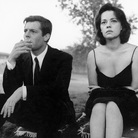 Dal 10 July 2025 al 10 August 2025
Roma | Palazzo Esposizioni Roma
Dal 10 July 2025 al 10 August 2025
Roma | Palazzo Esposizioni Roma
-
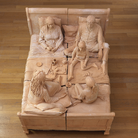 Dal 10 July 2025 al 3 November 2025
Casale Marittimo | Bolgheri, Castagneto Carducci, Casale Marittimo
Dal 10 July 2025 al 3 November 2025
Casale Marittimo | Bolgheri, Castagneto Carducci, Casale Marittimo
-
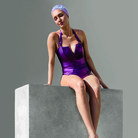 Dal 4 July 2025 al 21 September 2025
Roma | Palazzo Bonaparte
Dal 4 July 2025 al 21 September 2025
Roma | Palazzo Bonaparte
-
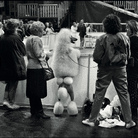 Dal 28 June 2025 al 21 September 2025
Roma | Palazzo Bonaparte
Dal 28 June 2025 al 21 September 2025
Roma | Palazzo Bonaparte
-
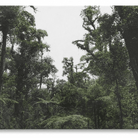 Dal 24 June 2025 al 29 October 2025
Firenze | Museo Novecento
Dal 24 June 2025 al 29 October 2025
Firenze | Museo Novecento
-
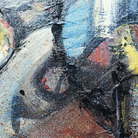 Dal 26 June 2025 al 18 July 2025
Firenze | Palazzo Sacrati Strozzi
Dal 26 June 2025 al 18 July 2025
Firenze | Palazzo Sacrati Strozzi


